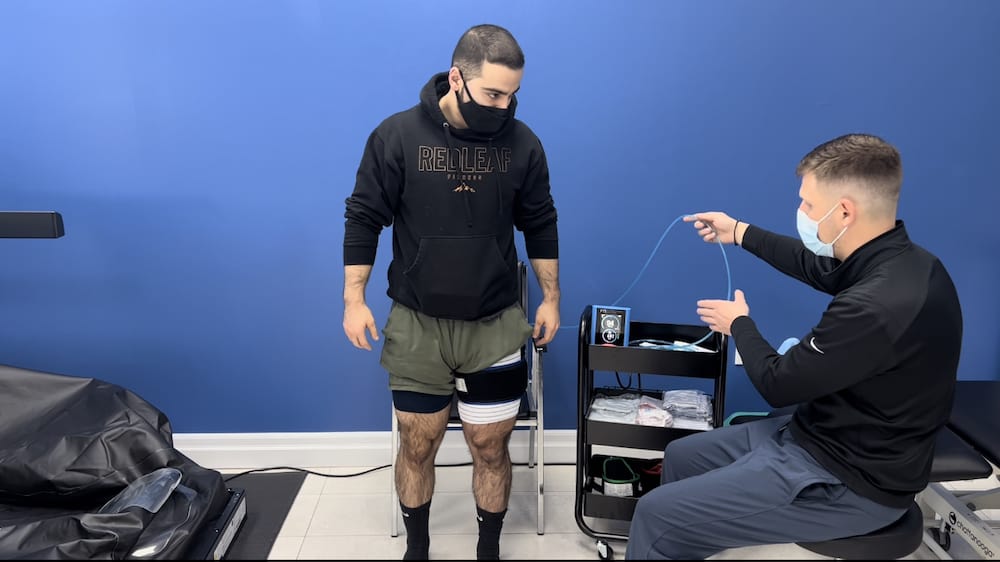
Blood flow restriction is really quite simple and ingenious. It works by restricting blood flow to an area of your body. At Physio For Surgery it is used in the area of your body that is injured. By restricting blood flow in this area we create an environment that has low oxygen levels. When these low oxygen levels are achieved we get you to perform a simple exercise, like calf raises, if we were trying to heal a calf injury.
When you perform an exercise at the same time that body part has limited oxygen it is forced to work harder. In order to perform a calf raise you need to use about 50% (this figure is strictly an example and not exact) of your calf muscle to lift your body up. By restricting blood flow, the amount of oxygen in the area decreases, by doing the calf raises and working the muscles, the calf demands more oxygen. In this environment we have an increased demand for oxygen and a decreased availability of oxygen.
What this does is puts your body part (the calf) into high alert, it can no longer rely on 50 % of your muscles to lift you up and down. The reason is that 50% of muscles have run out of oxygen, they can no longer work, they have no energy. So you must recruit more muscles to continue to do the calf raises.
Now you went from using 50% of your calf muscles to 100% of your muscles doing the exact same exercise!!!
So what is the beauty of using Blood Flow Restriction Therapy? You can use a quarter the weight and get twice the results.
Who is This Valuable for?
If you have just had surgery or come out of a cast for an extended period of time you will notice how much smaller your muscle is from one side to the other. Oftentimes after a knee surgery it is near impossible to straighten your leg let alone walk. If you can't put any weight on your leg, and the only way to strengthen your leg is to put weight on it, what do you do? This is where BFR comes in. By doing a very simple exercise like straightening your leg with BFR you can exercise your muscles like you are doing full body weight squats and regain strength much quicker. This is how all professional athletes get back from surgery so quickly.
Below are links to articles of NHL star Tyler Seguin, Connor Mcgregor and many Olympians that use BFR.
Here is an expert from the CNN article:
“...Olympians -- including long-distance runner Galen Rupp, diver Laura Wilkinson, swimmer Michael Andrew and alpine skier Mikaela Shiffrin -- have benefited from the technique. But you don't have to be an athlete to use blood flow restriction training -- here's what experts say you should know before you try it.”
Tyler Seguin who had virtually no quad muscle left and was recovering from a torn labrum in his hip had this to say:
"It's a whole different routine as far as movement," Seguin said. "I have all different types of stretching. I do this thing called BFR, which is blood-flow restriction. So, I'll do a mini workout with that, which is basically a massive band around my leg stopping the blood. Once I've done that workout it all releases and really helps activate my knee and my hip and my whole quad."
Connor Mcgregor orthopedic sports surgeon Dr. David Abbasi explains why blood flow restriction training could actually turn out to be McGregor's "secret weapon."
To inquire about using BFR to help with your injury, or to see if it's right for you, book your free telephone consultation here.


